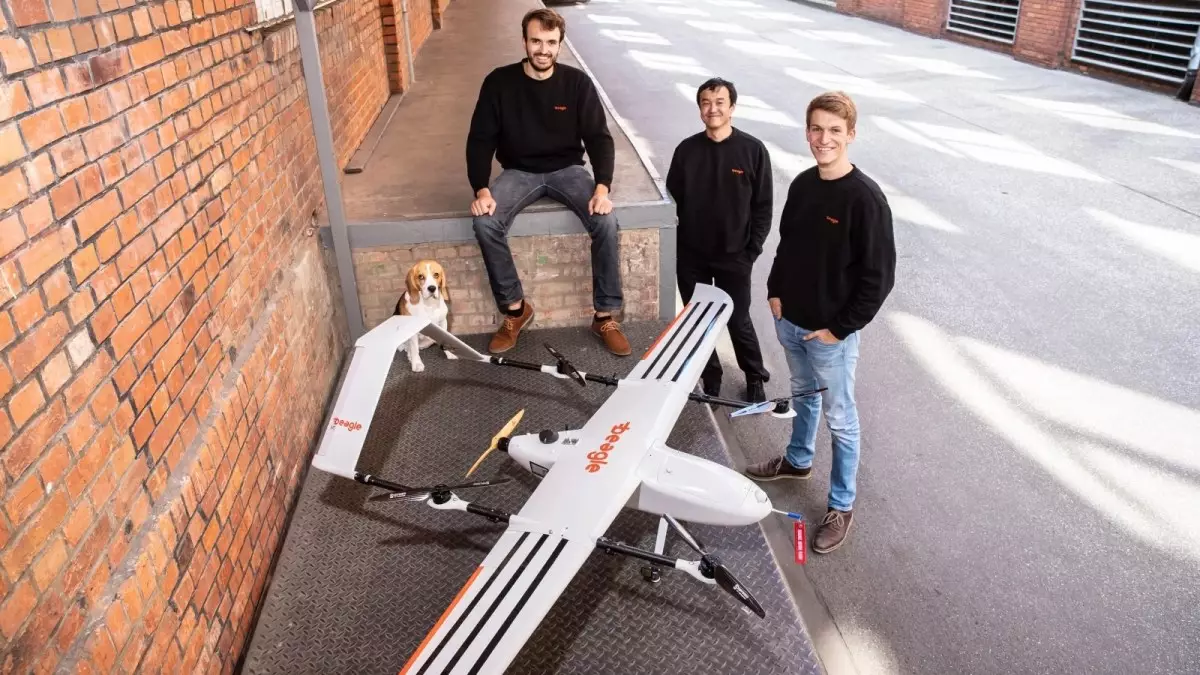In an era where technology is evolving at breakneck speed, the monitoring of energy infrastructure has been a pivotal concern, especially amid a backdrop of increasing environmental regulations and geopolitical tensions. Traditional methods of inspecting assets like electricity pylons and gas pipelines, primarily relying on expensive helicopters, are quickly becoming outdated. Enter Beagle, a Hamburg-based company that is trailblazing a new path by utilizing long-range drones for infrastructure inspection. This innovation not only reduces costs but also enhances the precision and efficiency of data collection, making it a significant player in the current landscape.
The Drones: Designed for Efficiency and Longevity
Beagle’s drones are captivating due to their exceptional range and automated capabilities. The co-founders claim these vehicles are akin to “computers with wings” — a description that underscores their technological sophistication. By utilizing cutting-edge design compliant with stringent EU airspace regulations, these drones operate independently, autonomously taking to the skies without the need for personnel on-site. Such groundbreaking technology has substantially optimized flight time and minimized the risk associated with traditional aerial inspections.
Co-founder Oliver Lichtenstein emphasized that the drones are not only technologically advanced but also economically viable. Clients are billed per kilometer of pipeline, introducing a flexible pricing model that is attractive to various stakeholders. This effective business structure has positioned Beagle towards profitability within Germany, as indicated by Lichtenstein’s assertion of being cash flow positive with their existing framework.
Funding the Future
Significant investments have already been funneled into Beagle, including a recent €5 million Seed round co-led by AENU and PT1, following earlier rounds that accumulate to nearly €3 million from pre-seed funding and grants. This injection of capital is crucial for accelerating their growth trajectory, which could signal a shift in the industry landscape as they expand their operational capabilities.
Lichtenstein recognizes that, while they have notable competitors — from Adlares’ CHARM helicopters to US-based Nearmap — Beagle’s drones are not simply fighting for market share; they provide a unique value proposition that integrates high-resolution data, cost efficiency, and an environmentally friendly approach to infrastructure monitoring. Such attributes are indispensable in a climate-conscious world where businesses and governments are increasingly prioritizing sustainability.
A Sustainable Future with Compliance
What sets Beagle apart is its adherence to EU regulations and operational standards. Their commitment to “fully EU” compliance not only enhances customer trust but also ensures that they maintain control over their data and software. This factor is particularly significant in today’s geopolitical climate, where reliance on foreign technologies could expose companies to vulnerabilities. With operational approval to fly within 80% of EU airspace, this innovation is poised to shape how infrastructure monitoring is conducted on the continent.
The looming deadline for methane emissions tracking, catalyzed by recent EU regulations, further enhances the potential market for Beagle’s services. The company’s focus on methane and hazard detection aligns perfectly with the mounting pressure for businesses to monitor and mitigate environmental impact.
Beyond Civilian Use: A Broader Implication
Interestingly, the capabilities of Beagle’s drones extend far beyond civilian applications. As pointed out by PT1’s Managing Partner Nikolas Samios, the technology harbors significant potential beyond energy sector surveillance — particularly in a world fraught with infrastructure threats. From energy to telecommunications, the real-time monitoring capabilities of these drones present an unparalleled advantage in identifying and mitigating risks associated with critical infrastructure.
As noted, while Beagle focuses on civilian inspections currently, the capabilities of their drones appear versatile enough to adapt to defense applications should the need arise. The technology could form an integral part of broader strategies to safeguard national infrastructure amidst growing concerns over potential attacks and disruptions.
While this article does not conclude with a summarization, the implications of Beagle’s innovations signal a transformative disruption in how we approach infrastructure monitoring. With their unrivaled technology, adherence to regulations, and an eye on sustainability, Beagle is not just riding the trend of drone technology — they are setting the standard for the future. The world will be watching closely as they pave a path toward more resilient and efficient infrastructure management.

